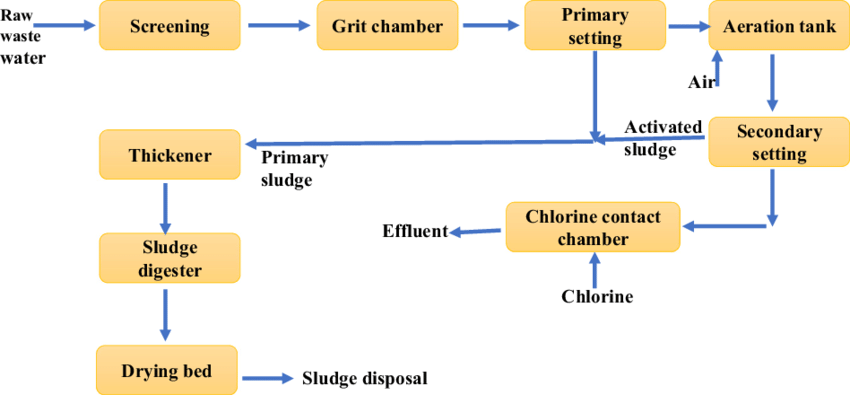See This Report about Reclaim Waste
See This Report about Reclaim Waste
Blog Article
The Main Principles Of Reclaim Waste
Table of ContentsThe Main Principles Of Reclaim Waste Not known Facts About Reclaim WasteNot known Details About Reclaim Waste The Of Reclaim WasteFacts About Reclaim Waste Revealed
Residential sewage waste refers to the waste and products from a residential septic container. The correct administration and disposal of residential sewer waste call for fluid waste to be moved to a sewer treatment plant where the proper methods and devices are used to detoxify and dispose of waste.
Business waste usually includes possible dangers, such as flammable materials or a mix of fluid and solid waste products, and needs an advanced and detailed disposal procedure. The disposal of industrial waste generally entails the filtering of waste before transportation to guarantee safe and proper disposal. Industrial waste is developed from by-products and runoff of commercial processes and production.
This type of waste can not make use of the same sewage management transportation or processes as septic or business fluids. The hazardous waste management process calls for the inspection and testing of liquid waste before it goes through the disposal procedure (industrial wastewater treatment). Drainage waste is the liquid waste that comes from runoff and excess stormwater in highly booming areas or cities
Runoff waste can cause contamination and flooding if not dealt with correctly. Making sure proper waste monitoring can prevent disasters and reduce environmental injury.
Some Known Factual Statements About Reclaim Waste
Contact PROS Solutions today to find out about our waste monitoring and disposal services and the appropriate methods to care for the liquid waste you create.
(http://www.askmap.net/location/7161699/australia/reclaim-waste)Do you understand what takes place to your water when you disengage, flush the toilet or drain the washing device? No? Well, it deserves knowing. This supposed 'wastewater' is not only an essential source but, after therapy, will certainly be launched to our land, rivers or the sea. Used water from commodes, showers, bathrooms, cooking area sinks, washings and industrial processes is called wastewater.

water used to cool machinery or clean plant and here are the findings equipment). Stormwater, a kind of wastewater, is runoff that streams from farming and city locations such as roofing systems, parks, yards, roadways, courses and gutters right into stormwater drains, after rain. Stormwater moves unattended straight to regional creeks or rivers, at some point getting to the sea.
The Reclaim Waste PDFs
In Queensland, the majority of wastewater is treated at sewer therapy plants. Wastewater is transferred from domestic or commercial sites through a system of sewage systems and pump terminals, called sewerage reticulation, to a sewage therapy plant. Regional governments build, preserve and operate most sewage treatment plants. Operators are certified under the Environmental Management Act 1994 to discharge cured wastewater at an appropriate ecological requirement right into rivers.
The Department of Natural Resources encourages city governments concerning managing, operating and maintaining sewerage systems and treatment plants. In unsewered areas, neighborhood governments might require householders to mount private or household sewer treatment systems to deal with domestic wastewater from toilets, kitchens, shower rooms and washings. The Division of Natural Resources authorises using house systems when they are shown to be reliable.
In some new communities, therapy of some stormwater to remove trash, sand and gravel has begun utilizing gross toxin catches. Wastewater therapy takes place in 4 stages: Removes solid matter.
Utilizes little living organisms understands as micro-organisms to damage down and eliminate staying dissolved wastes and great bits. Micro-organisms and wastes are incorporated in the sludge.
The Definitive Guide for Reclaim Waste
Nutrient removal is not offered in any way sewer therapy plants because it requires pricey specialist devices. It is ending up being much more common in Queensland. Clear liquid effluent generated after therapy may still include disease-causing micro-organisms. If this effluent is launched into rivers such as rivers or the sea, the micro-organisms will eventually die out.

This typically implies wastewater needs to be dealt with or impurities eliminated before it can be released to rivers. Many wastewater flows into the sewage system. Under the Act, city governments administer authorizations and permits for ecologically relevant tasks (Ages) involving wastewater launches that may have a local influence. The department administers authorizations and licences to Periods including wastewater releases that could have a regional or statewide influence.
Not known Details About Reclaim Waste
Or else, examples are taken for lab evaluation. Typically several tests are needed to develop the degrees of each of the various pollutants such as oils, heavy metals and chemicals in water. Surveillance offers accurate info concerning water quality and can verify that permit problems are being fulfilled. The details obtained through tracking supplies the basis for making water top quality decisions.
Report this page